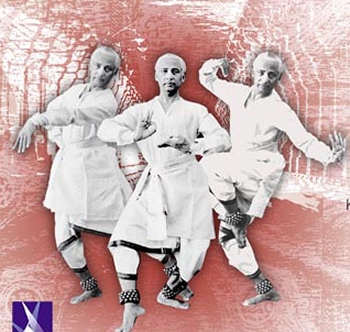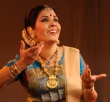Narthaki

News

Info

Featured

 |
  |
The King and the King Maker - Vempati Master! - Ramaa Bharadvaj e-mail: angahara-ramaa@yahoo.com August 22, 2012  "The King is gone, long live the King!" - this famed proclamation is what bursts forth in my thought when I think of my guru Vempati Chinna Satyam. And that he was! A monarch of unparalleled distinction! He has not only created a global empire for Kuchipudi but has also diligently trained thousands of dancers, both male and female, as heirs to carry on the legacy, many of whom are leading performers and teachers in the field of Kuchipudi today. That makes him both a king and a king-maker. It is ironic that he was named "Chinna" Satyam for there was nothing little or small about him, from his stately physical stature to his colossal accomplishments. Many of his choreographies including the famed "puja dance" created as a tribute to Siddhendra Yogi have become staple of most Kuchipudi dancers today. A dreamer, an innovator, a visionary and a meticulous artist, he embodied both majesty and humility through his persona. Here I share few of my teenage recollections of Vempati master and my training days at his famed Kuchipudi Arts Academy, Chennai. The meeting of the two legends It was the mid 1970s. My twin sister and I were young teens studying Bharatanatyam from the legendary "Kumari" Kamala. We had just returned from a performance at the Kolar Gold Fields. Kamala was very satisfied with our performance there and she told our mother to bring us to her house the next morning for she had something special in mind for us. She then drove us to T Nagar to a grand old house that stood hidden amidst the hustle of the busy market. We entered a large hall, its walls evenly lined on top with large black and white photo portraits of attractive dancers. A large Nataraja stood imposingly on a cement dais. From the office room emerged Vempati master - slender, tall, and utterly distinguished. But it is the meeting of these two gurus and their mutual respect that has remained etched in my memory. His hands folded and clasped at the elbows and his face beaming with joy, he welcomed Kamala with great reverence. And she responded with equal graciousness. Very few words were exchanged. Kamala simply said, "These are my students. I want them to learn Kuchipudi from you." He accepted immediately and thus began our foray into Kuchipudi. No fees were ever asked of us during those initial training years lasting for 5 years. It was only later that I found out that it was Kamala who gave dakshina to him on our behalf (and even that only because she had always been strongly against accepting favors) and he respected that and accepted whatever it was that she gave him. To this day I have no idea what exactly transpired between them or what that dakshina was. Almost a decade later, while traveling in a bus from Boston to New York City, Vempati master sat next to me and spontaneously spoke of the immense admiration and respect that he held for Kamala. When he came to the city from the village as a young Kuchipudi dancer, he was greatly influenced by Kamala's Bharatanatyam performances. "I would save the small allowances that my family gave me, so that I could buy a ticket to go see Kamala dance," he told me. The sculpturesque style of her dance inspired him to expand the vocabulary of Kuchipudi movements. The full extensions of the arms, the frozen poses and high leaps found in Vempati Chinna Satyam's style of Kuchipudi are, to me, very reminiscent of Kamala's dancing style. Appearance matters Fresh off the ironing table! This is the image I have of Vempati master. Whether it was an early 7am class or a late 7pm class, I do not ever remember seeing him casual in his appearance. I once mentioned this to Bala Akka (Kondala Rao) who replied, "Oh, he looks like that at 4am also. Many of his choreographies are early morning inspirations. He will send for me immediately to teach it and I have to be ready and equally well groomed as well. Or he would get really upset with me." During his US tour in the early 1980s I too saw this first hand. He invited me to accompany him on the bus for his East Coast concerts. Even after a late night performance, Master would emerge at dawn fresh as a morning flower and ready to board the bus and expected his dancers to do the same. Casual travel attire was not permitted. The women dancers had to wear sarees and be scrupulously groomed when they landed in the next town and were welcomed by the organizers. Maintaining that aura and presence off stage was as important as it was on stage. Such insistence can only arise if one looked at oneself as a dancer at every moment of one's life. There is a certain magic, a mystery and a charm that a dancer brings with her when she appears on stage as a performer. That spell was not to be broken even for a second, for dancing was not something to be "done"; dancing was a dharma - a lifestyle - for those who had chosen it or were chosen for it! The Guru and Guide It was only on very rare occasions that Master was not present during classes. Whether it was the evening lessons for junior group or the morning class for advanced students he was on hand to guide, to chide, to correct and to instruct. The special treat would be the times when he would demonstrate a certain movement and we would watch the graceful flow that poured out of his long limbs with such ease. It somehow never looked the same on anybody else's body. As gentle as he was with us - the new students - I also saw him transform into an exacting teacher and relentless taskmaster. He had no patience for careless dancing or repeated mistakes. He was capable of admonishing his senior students unsparingly. The musicians at Kuchipudi Arts Academy came in every morning. With the tuning of the instruments practice began daily with Master himself wielding the "thattukazhi." That wondrous class atmosphere of daily lessons with orchestral accompaniment is something that I have not seen or experienced anywhere else since. All the important dance numbers were practiced daily and thus his students and his musicians were well rehearsed and ready to perform anywhere at a moment's notice. Many times, the discussions for musical or lyrical compositions, or costume ideas for a new production also happened immediately following class and it was during those times that I had the privilege of watching a magnificent artistic director at work. He was full of humility and creative exuberance in his interactions with Sangeetha Rao when they were composing a new piece. Sometimes a costumer or set designer would stop by and he would personally check the sketches and samples and give meticulous design instructions. It was by watching the Kuchipudi dancers of the Academy get ready for performance that I first learnt the techniques of make-up for mythological characters. Like a true grandsire of the Kuchipudi family, Vempati master's care for his students extended beyond the dance studio. During those teenage years, I never had a real comprehension of his eminence or luminary status. Such was his accessible down-to-earth nature. He was simply a father figure to us. His students were like his children and he treated us as such. There have been days when after a morning class running late into the afternoon, he would make sure I went into the kitchen and ate lunch before I left. Today this 'Vempati' family tree has spread its branches to include thousands of children and grandchildren to carry on the legacy that he created. Even to have lived in the same era as this great master and to have watched the growth of Kuchipudi is a blessing, but what to say of those of us who have had the privilege of being in his presence or under his tutelage? We can only turn to the heavens with deep gratitude for choosing to shower us with such divine grace. We give you a standing ovation beloved Master garu! With every performance of Kuchipudi and with every new student who gets initiated into its training, may the art form that you dedicated yourself to, itself become a never ending celebration of your life.  Ramaa Bharadvaj is a dancer/writer/choreographer who lived and worked in the United States for 32 years. She studied Bharatanatyam from Vazhuvoor Ramaiah Pillai and Kamala, and Kuchipudi from Vempati Chinna Satyam and MVN Murthy. A recipient of multiple honors and awards for her choreographies and performances, Ramaa returned to India in 2009 and currently serves as the director of dance for Chinmaya Naada Bindu, a Gurukul for Indian performing arts based in Kolwan, Pune. Post your comments Please provide your name and email id along with your comment. All appropriate comments posted with name and email id in the blog will also be featured in the site. |